 Fossil
Hunt
Fossil
Hunt
In this activity there are four tables, each of which has a box with lots of rocks and 20-30 fossils in. The fossils were collected by me from specific UK locations, and reflect not only which rocks and fossils can be found at that spot, but also real ecosystems at a certain point in the past.
In their small teams children visit each table in turn, and look through the box to see how many fossils they can find. They have about 4 minutes to do this, with the aid of a photo guide showing the sorts of fossils in the box.
This activity is designed to bring the excitement of fossil hunting into the classroom, but also to train children in observational skills. Some rocks have geological features which can make them look like fossils, and children will try to spot the difference between a real and a 'pseudo' fossil. Each team will get a score based on how many fossils they find, minus one for each pseudofossil.
The fossil boxes are shown below, as well as the locations from which they were collected. Click for larger versions of photos.

Fossil hunters at Lyme Regis
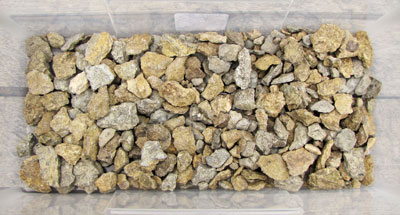
Dudley Box - with corals, brachiopods (shells), bryozoans (sea mats, like corals), and trilobites
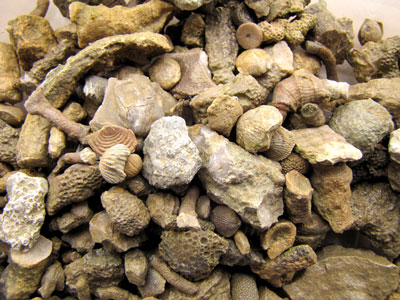

The Wren's Nest, Dudley - a Silurian coral reef,
about 425 million years old

Saltwick Bay box - with ammonites, bivalves (shells), and belemnites (squids) - see below
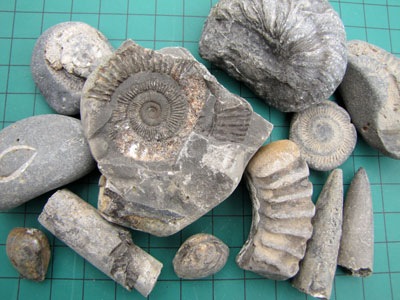
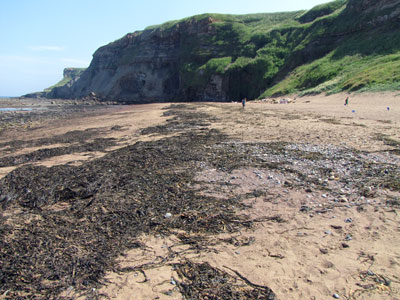
Saltwick Bay, Whitby - Jurassic coast, about 190
million years old

Birley Hill box - with corals, brachiopods (shells), and crinoids (sea lilies) - see below.


Birley Hill, North Wales - Carboniferous coral reef, about 330 million
years old

Newhey Quarry box - with horsetail plants, and trace marks of fish, worms and other animals - see below
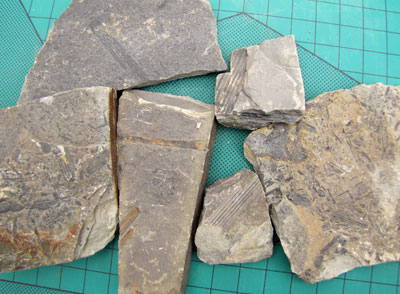
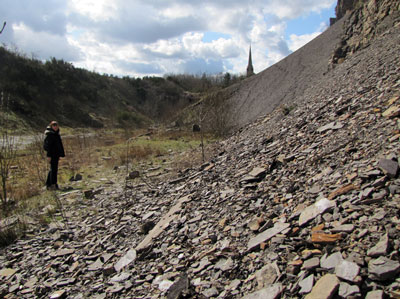
Newhey Quarry, near Rochdale - Carboniferous
sea/river bed, about 315 million years old